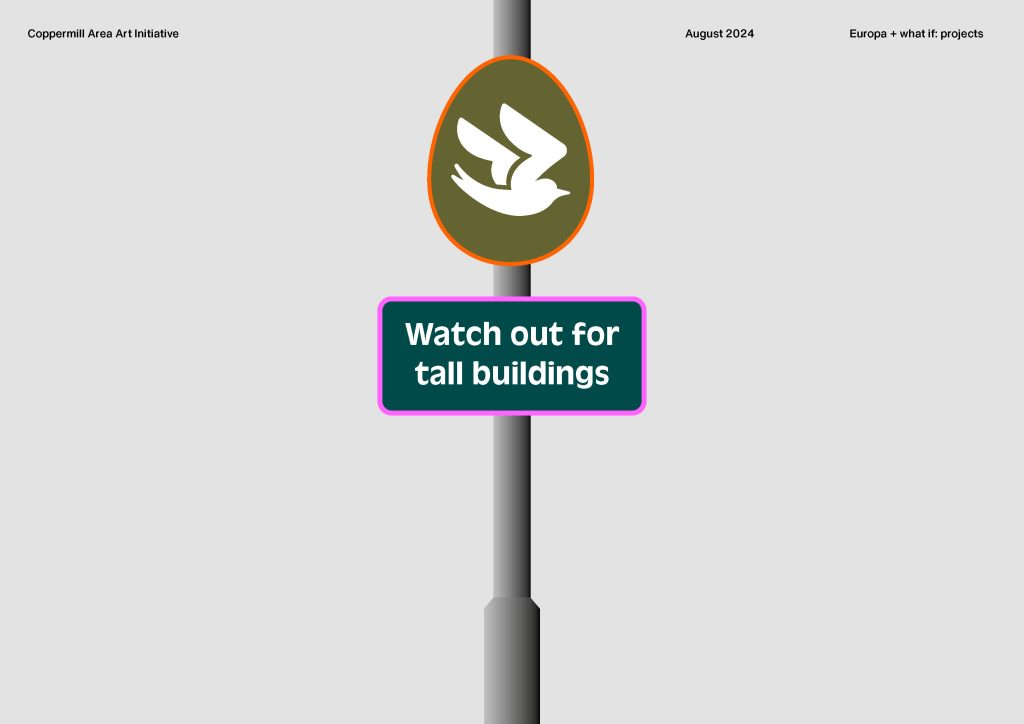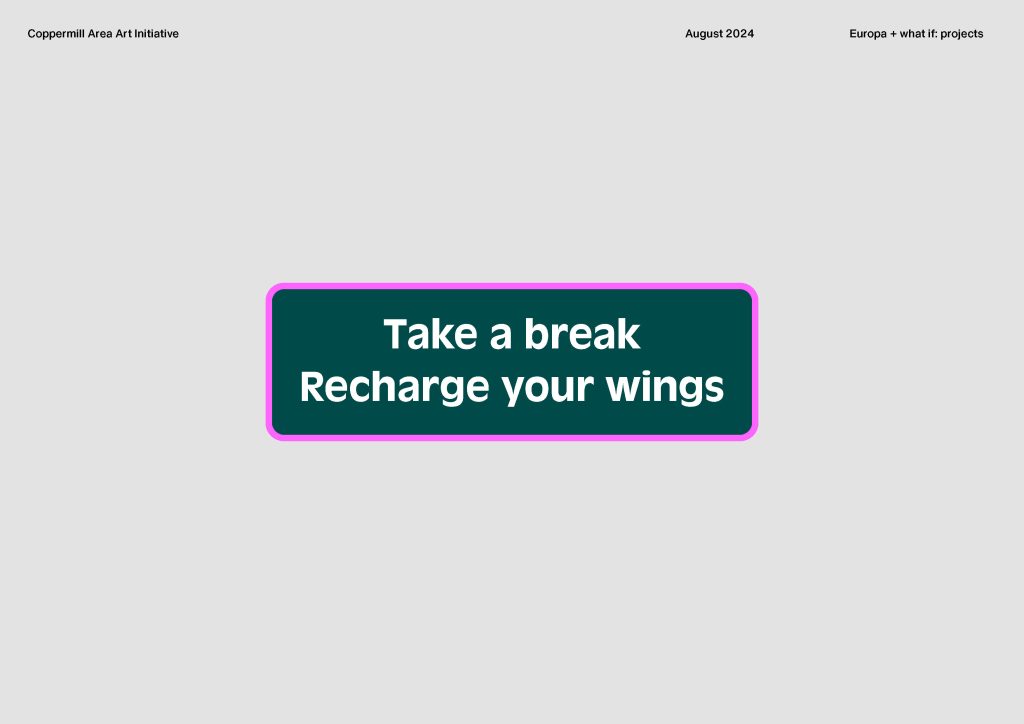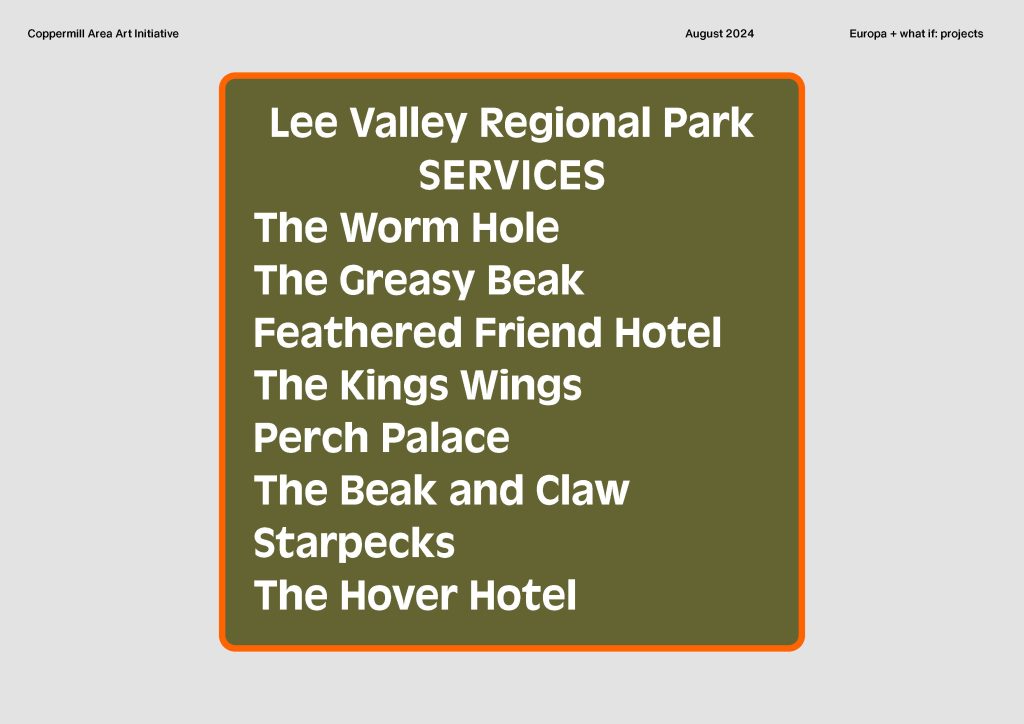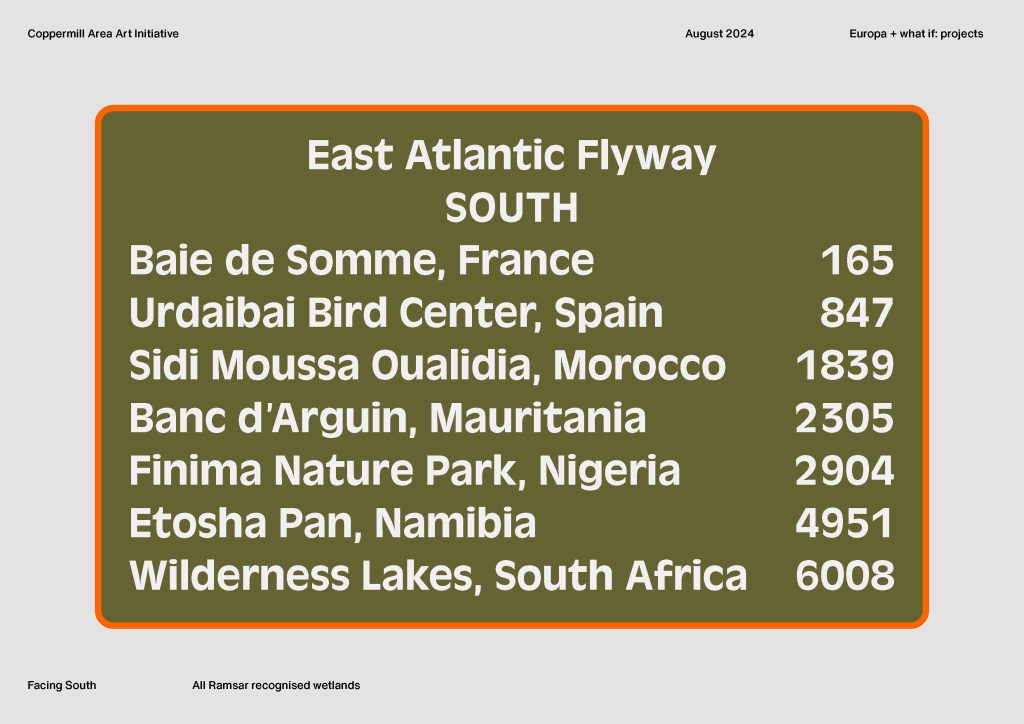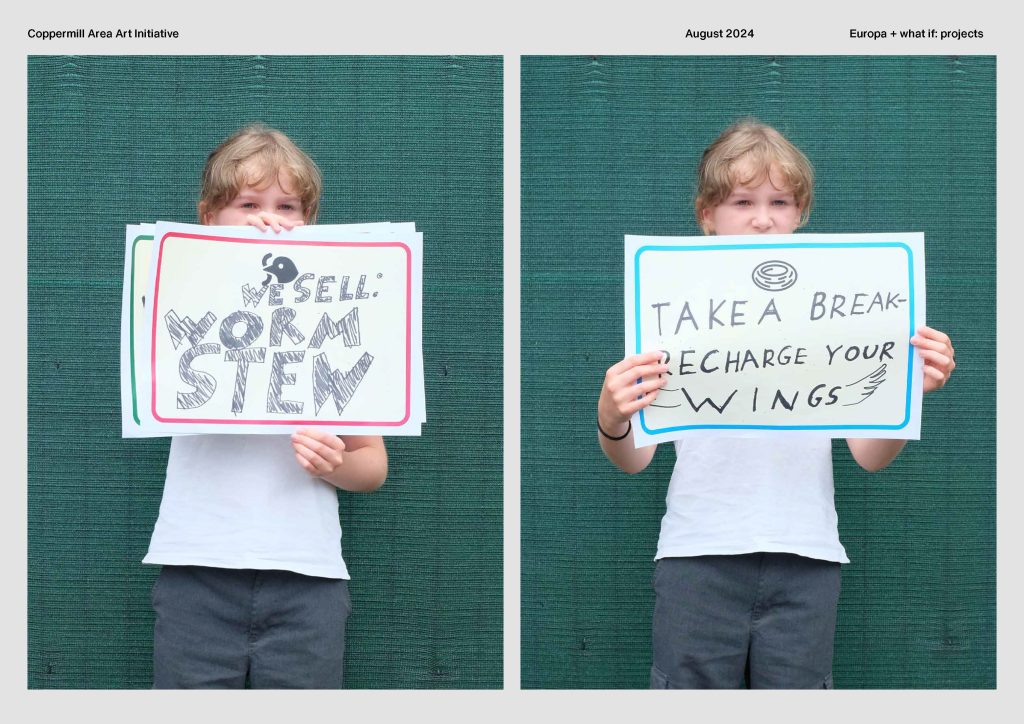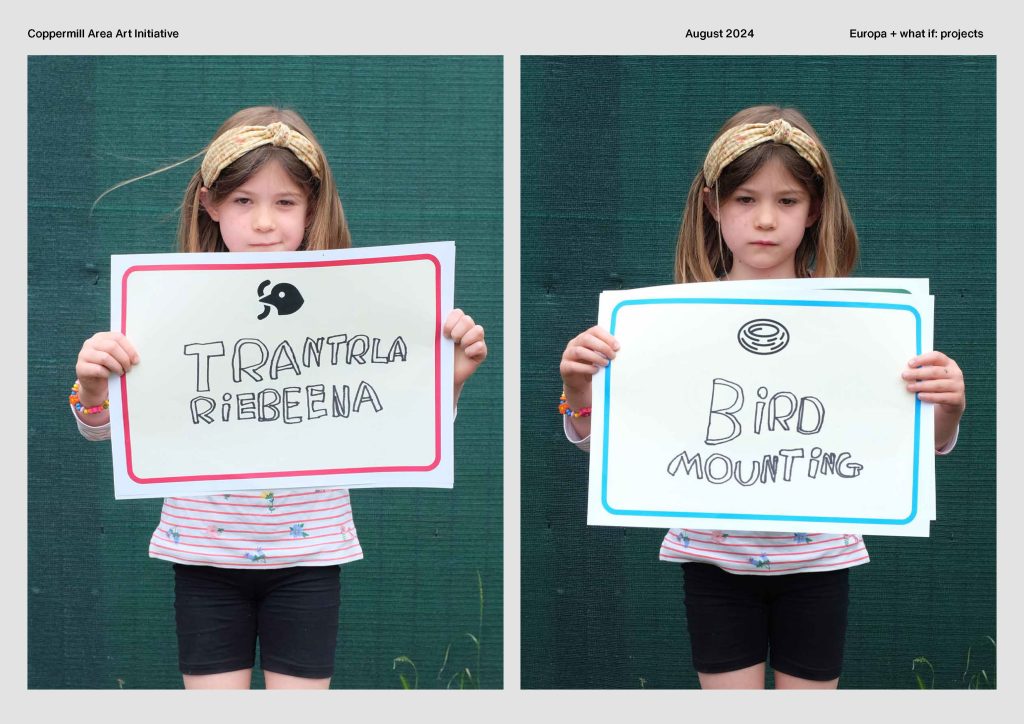The art initiative “Signs for Birds” is part of the Coppermill Liveable Neighbourhood scheme and focuses on two distinct areas: Coppermill Lane and the flood relief bridge, as well as the Frederic Street and Grange Road environment. In collaboration with with young people, residents from the Coppermill Area, graphic designers Europa and Project Zero, we developed a distinct visual identity that adds humour and color while foregrounding migratory bird species found at the Walthamstow Wetlands.
Previous phases of the Coppermill Liveable Neighbourhood scheme were developed in collaboration with local residents and include a wide range of improvements in public spaces, sustainable urban drainage systems (SUDs), active travel, and highway enhancements.
Signs for birds deliverables included:
Review existing artworks at the flood relief bridge.
Propose outline remedial work for the flood relief bridge and Grange Road passageway.
Develop ideas and proposals for new visual identities in both environments that assist with orientation, wayfinding, and place-making.
Conduct co-creation workshops with young people in the area and engage in dialogue with local residents and businesses.
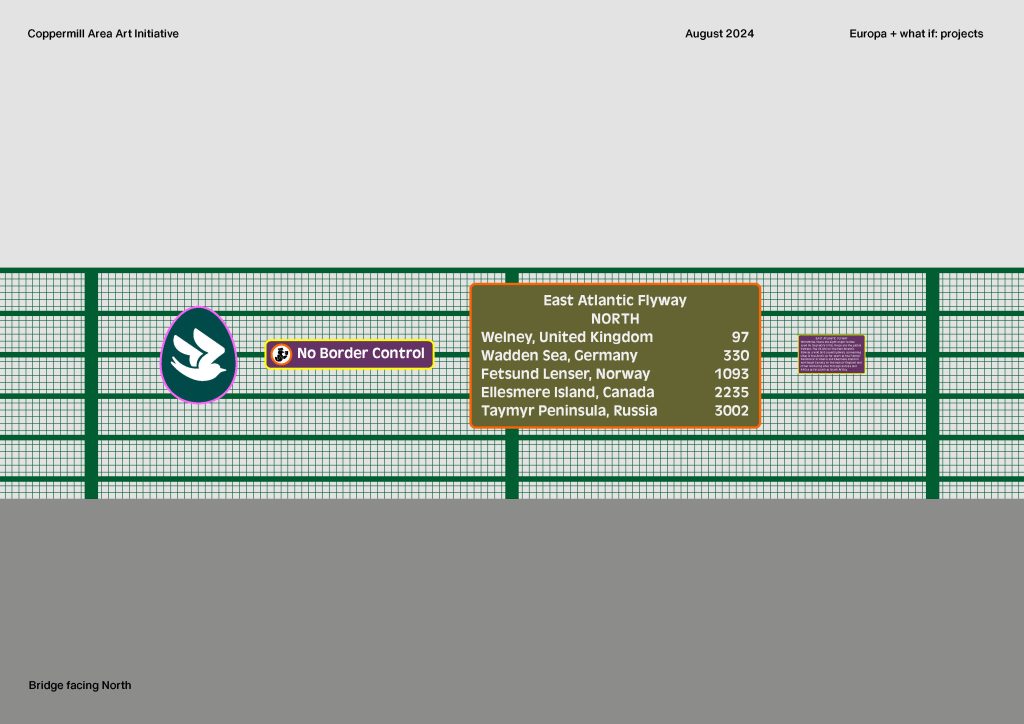
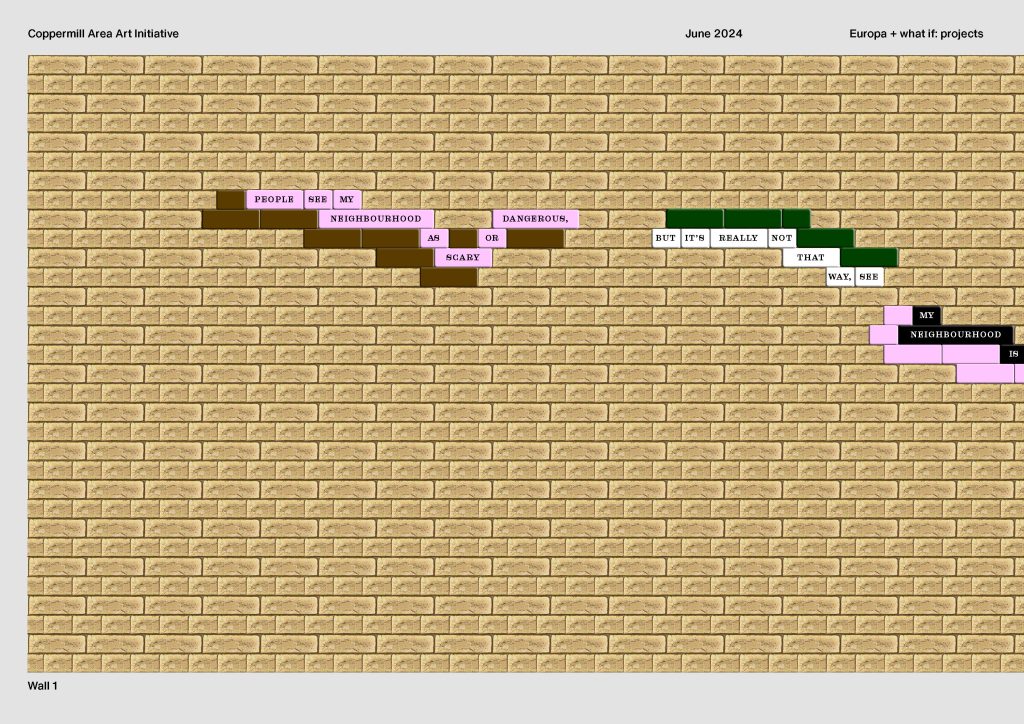
Birds visit Walthamstow Wetlands for various reasons, including feeding, breeding, roosting, and moulting. These birds can be seen throughout the year, sharing their environment with the residents of the Coppermill Area in Waltham Forest. Many birds arrive from their migratory journeys and are particularly drawn to the open water and islands found in the wetlands. In winter, wildfowl migrate from the southern regions to the UK. By spring, some will return south, while others—such as warblers, terns, martins, and swifts—come north to breed here, migrating back before winter sets in.
The “Signs for Birds” art initiative invited the public to participate in co-creating public art in the Coppermill Area of Waltham Forest. Workshops were organized for residents, schools, and various international communities located along the East Atlantic Migratory Flyway to generate creative ideas for signs meant for both humans and birds.
As a starting point in the workshops, we focused on some of the shared bird species that temporarily reside along the Flyways, such as the Red Knot, Osprey, Black-tailed Godwit, and Common Tern. The workshops also connected with two Wetlands Centres along this migratory route: Finima Nature Reserve in Nigeria and Slimbridge Wetland Centre in Oxfordshire.

-
dates:
2024 – ongoing - commissioned by:
LB Waltham Forest - collaboration:
Project Zero
- graphic designer:
- related projects:
Coppermill Lane Design Framework
Coppermill Liveable Neighbourhood
Waltham Forest

